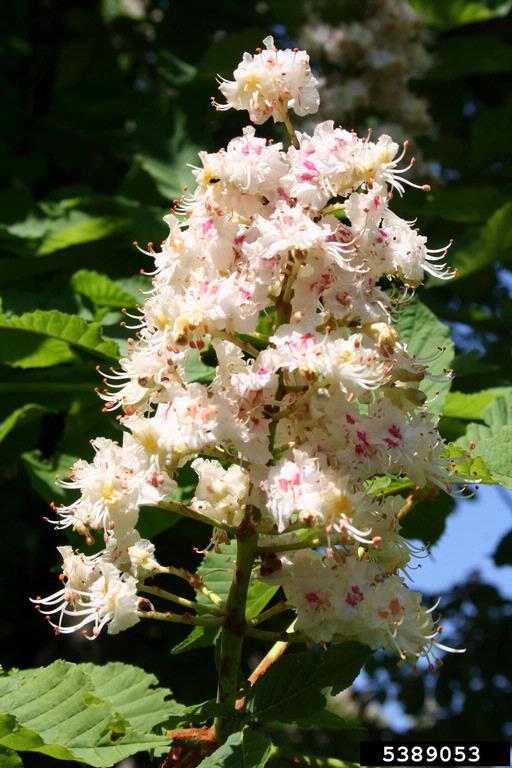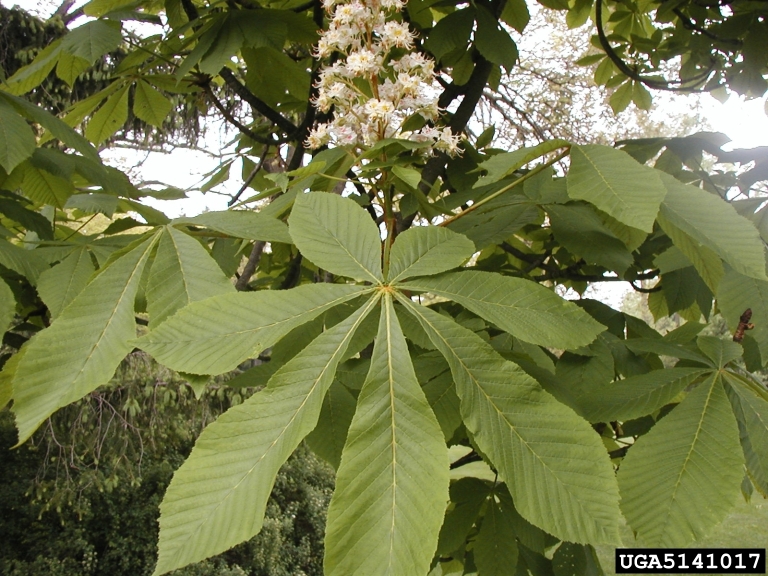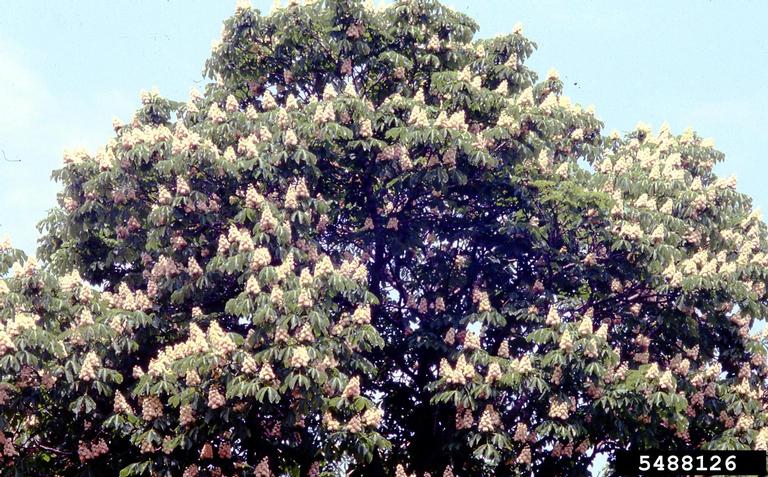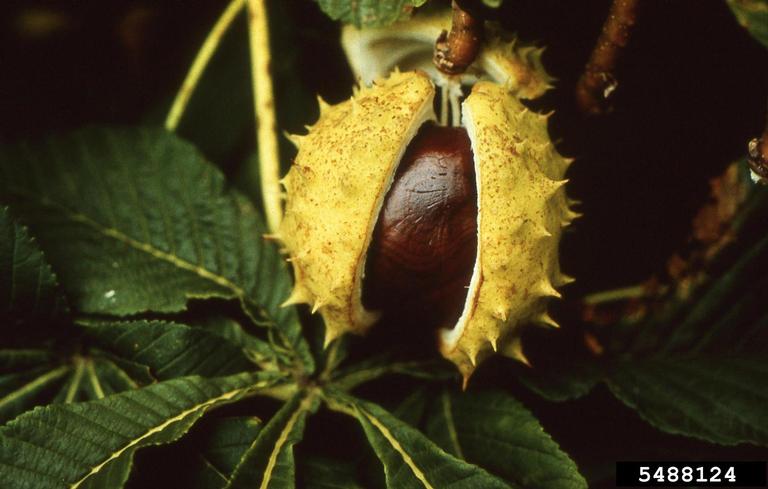Horse Chestnut
Aesculus hippocastanum
Plant Description
A deciduous tree with opposite, large, palmate, bilaterally symmetrical leaves. Three leaflets are long, two are medium, and two are relatively short. Flowers are large and white with yellow and red spots and grow in terminal clusters. Fruits, called conkers, are round, prickly capsule with 1-3 smooth brown seeds inside.
Plant Details
| Life Forms | |
|---|---|
| Habitats | |
| ODA Listing | |
| Soil and Moisture Conditions | |
| Suggested Actions | |
| Mature Height | 50-80 ft. |
| Distribution | In Oregon, horse chestnut has been found in the Willamette Valley and around Medford. Also found in in the Northeast and Midwest and as far south as South Carolina. |
| Control | Girdle bark and phloem from 10 cm band around trunk. Damaging xylem may promote suckering. Application of herbicide to cut stump following all label directions. |
| Disposal Methods | Horse chesnut seeds are poisonous and should not be eaten. Gather and dispose of the seeds so they don't create a driving hazard. |
| Reproduction and Spread | Primarily spreads by seed. |
| Introduced | European in origin. |
| Look Alikes | Ohio buckeye (Aesculus glabra), sweet chestnut (Castanea sativa), chinquapin (Chrysolepis chrysophylla), and Rodgersia aesculifolia. |
| Impact | Branches of this weak wood break easily, creating a hazard. Can outcompete native species. |
| More Info |
© Marion Soil and Water Conservation District. All Rights Reserved.




